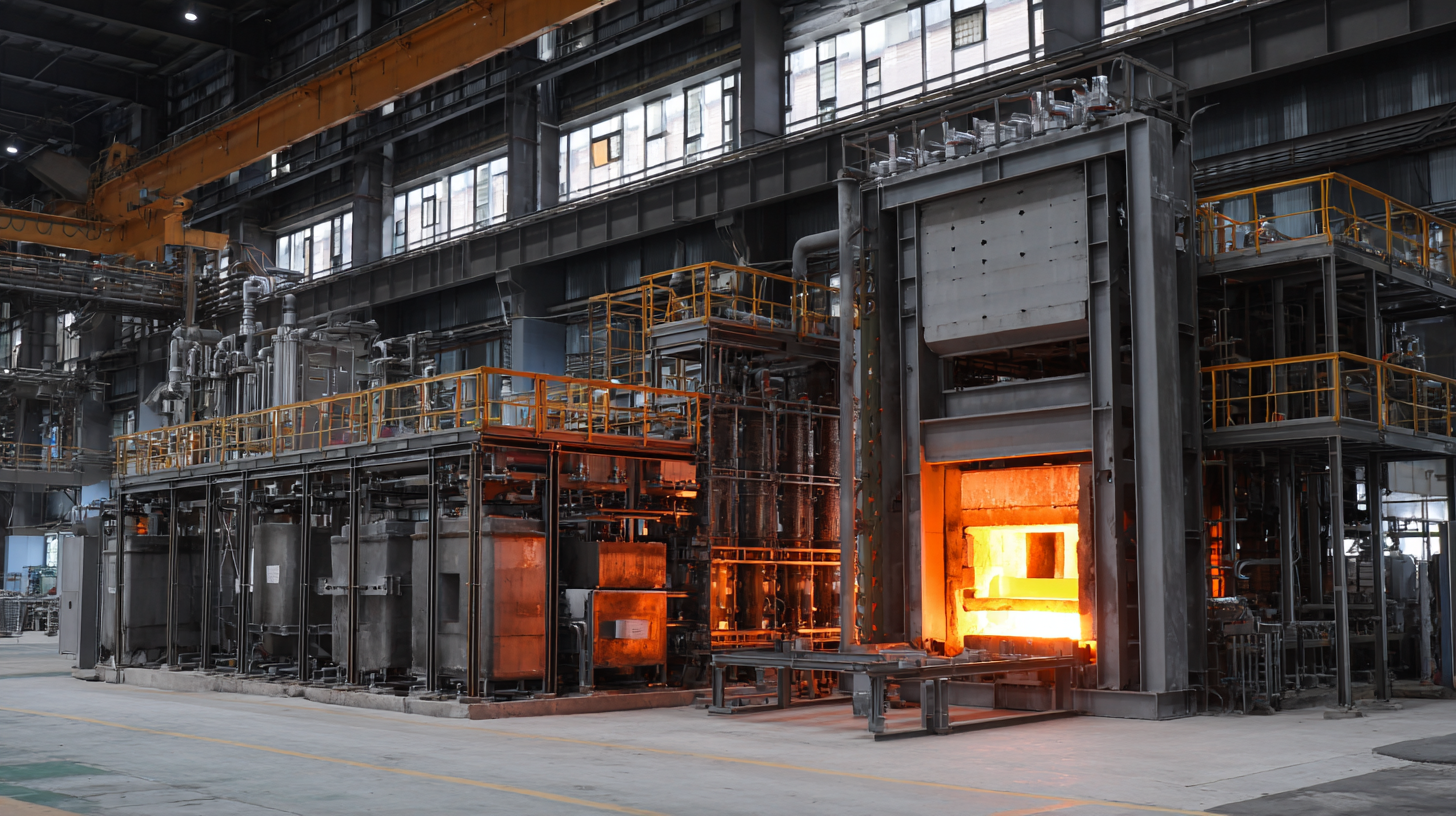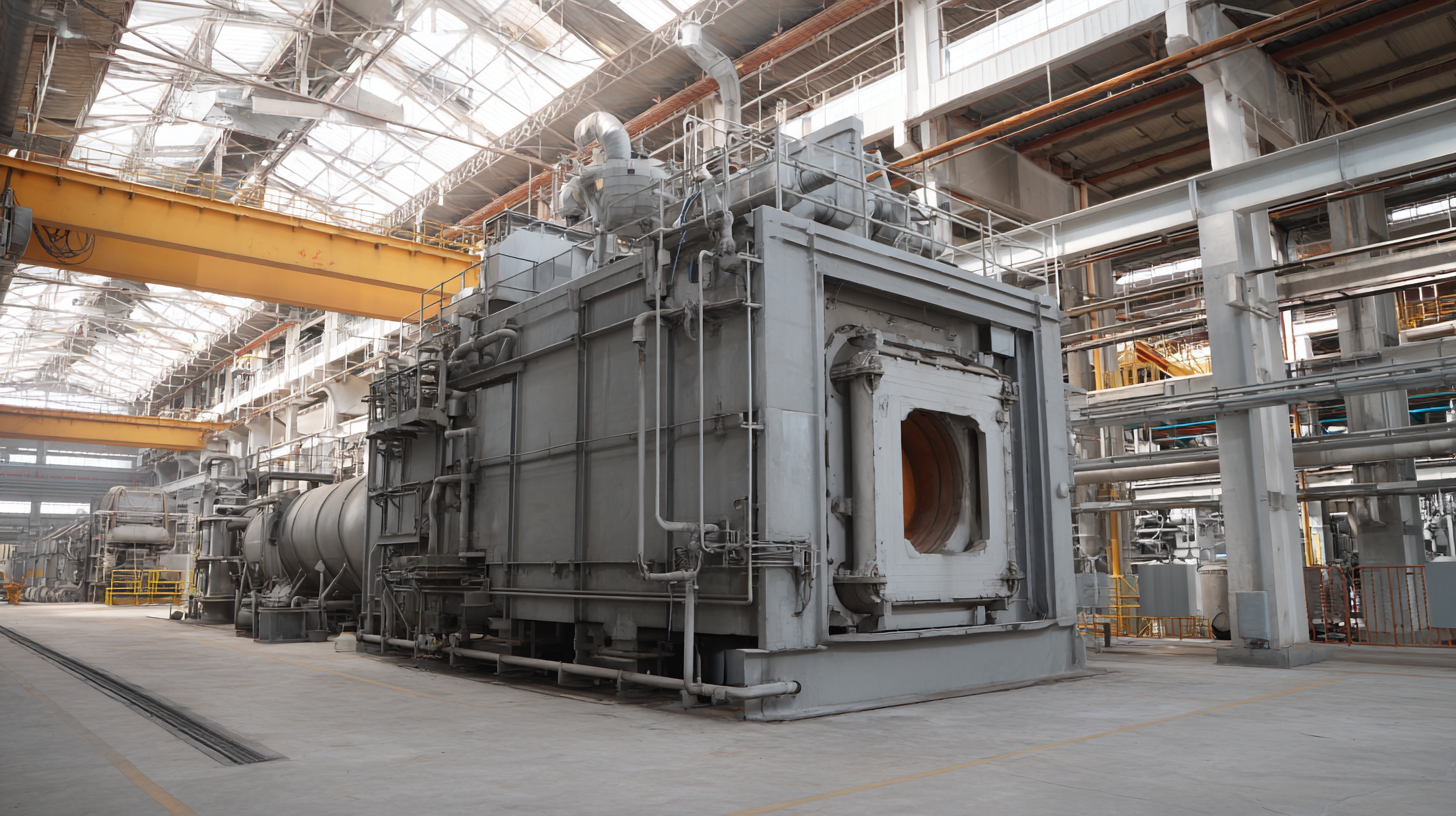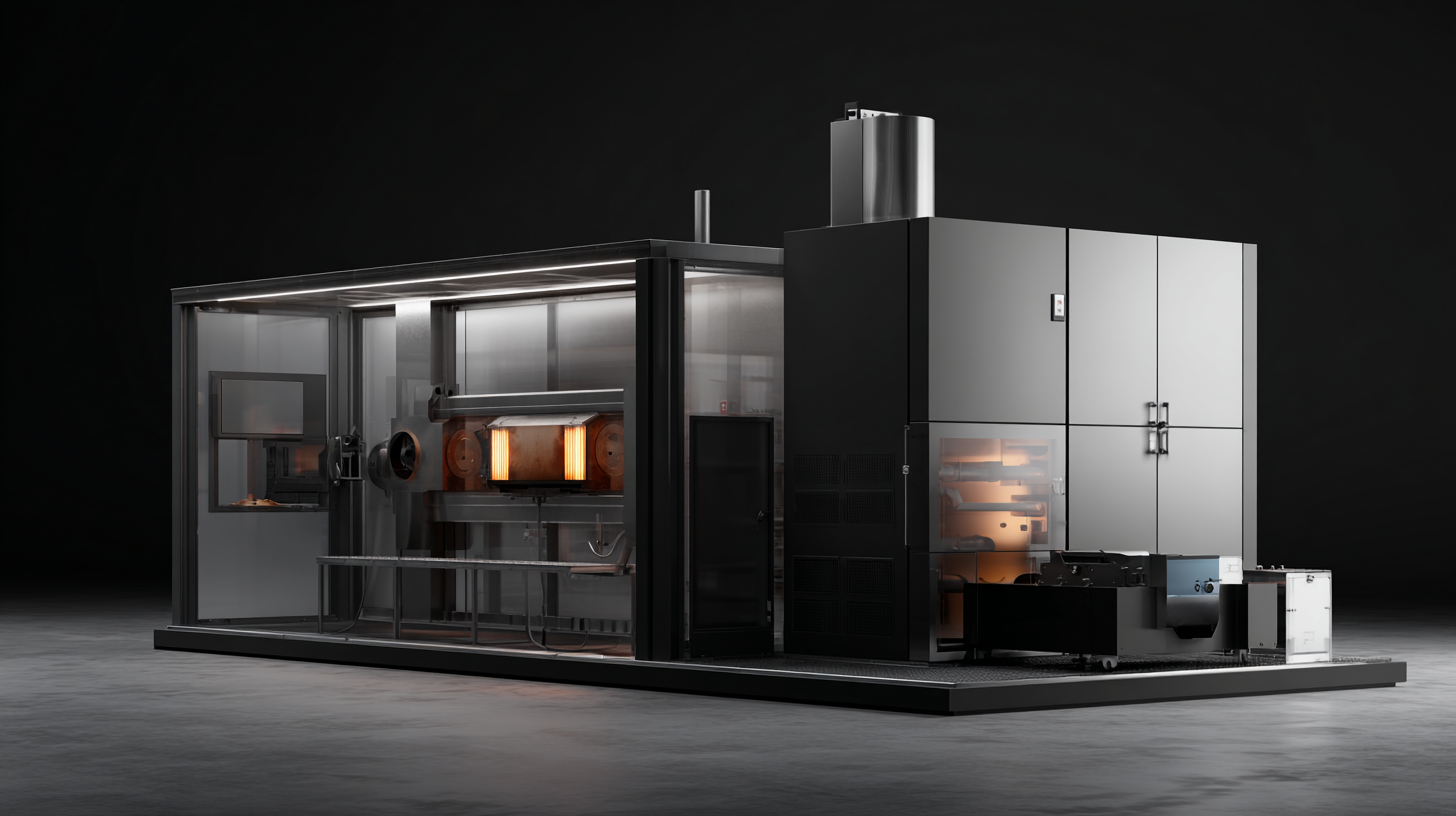Exploring Industry Applications of the Best Hip Furnace: Insights and Innovations
In the ever-evolving landscape of industrial technology, the Hip Furnace stands out as a pivotal innovation that enhances efficiency and precision across various applications. As we delve into the industry trends anticipated for 2025, this blog will explore the significant role of Hip Furnaces in sectors such as aerospace, automotive, and medical manufacturing. By examining case studies and technological advancements, we aim to provide valuable insights into how these furnaces not only improve production processes but also drive innovations that align with modern sustainability goals. Whether you're a seasoned professional or new to the field, understanding the transformative impact of Hip Furnaces will equip you with the knowledge to harness their potential in your industry, contributing to smarter and more efficient manufacturing practices. Join us as we uncover the intricacies and benefits of this crucial technology.

Exploring the Technological Advancements in Hip Furnace Designs for Enhanced Efficiency
The evolution of Hot Isostatic Pressing (HIP) furnace designs has been pivotal in enhancing efficiency across various industries, particularly in aerospace and automotive sectors. Recent advancements in HIP technology have led to notable improvements in energy consumption. According to a report by MarketsandMarkets, the global HIP market is expected to reach $1.35 billion by 2026, reflecting a compound annual growth rate (CAGR) of 5.3%. This growth is largely driven by innovations that prioritize sustainability and resource efficiency.
One of the standout innovations involves the integration of advanced control systems that optimize the processing parameters in real-time. By allowing manufacturers to adjust pressure and temperature dynamically, these systems significantly reduce cycle times while improving product quality. Additionally, the incorporation of high-performance materials in furnace construction not only extends lifespan but also enhances thermal efficiency. A study from Grand View Research highlights that the use of durable, lightweight materials can increase energy efficiency by up to 20%, thereby contributing to lower operational costs and a reduced carbon footprint. As industries continue to embrace these technological advancements, the role of HIP furnaces in producing high-performance components will become increasingly vital.

Key Industry Sectors Benefiting from High-Quality Hip Furnaces
High-quality hot isostatic pressing (HIP) furnaces are revolutionizing various industries by enhancing material properties and production efficiencies. Notably, sectors such as aerospace, medical, and automotive are leading the charge in adopting these advanced technologies. According to a recent report by Market Research Future, the global HIP market is projected to grow at a CAGR of 5.6% from 2021 to 2027, driven by increased demand for high-performance materials. Aerospace manufacturers, for example, utilize HIP processes to produce lightweight, durable components that meet stringent safety standards, allowing for improved fuel efficiency and reduced emissions.
In the medical field, the precision and reliability of HIP processes are critical for fabricating biocompatible implants. A study published in the Journal of Materials Science indicated that HIP-treated titanium alloys exhibit significantly enhanced strength and fatigue resistance, making them ideal for orthopedic applications. As the demand for medical implants continues to rise, the adoption of high-quality HIP furnaces becomes increasingly beneficial.
**Tip:** When selecting a HIP furnace, consider the specific material requirements and industry standards to ensure optimal performance. Investing in state-of-the-art technology not only enhances product quality but can also lead to significant long-term cost savings. Additionally, regular maintenance and calibration of your HIP furnace can help maintain consistent performance and extend its lifespan.
Exploring Industry Applications of the Best Hip Furnace: Insights and Innovations
| Industry Sector | Application | Benefits of High-Quality HIP Furnaces | Innovation Features |
|---|---|---|---|
| Aerospace | Processing of superalloys and titanium | Enhanced material properties, reduced porosity | Advanced temperature uniformity, improved cycle times |
| Automotive | Production of high-performance components | Increased durability, efficiency in fuel consumption | Integration of smart technologies, energy-efficient operations |
| Medical Devices | Fabrication of biocompatible implants | Improved biocompatibility, precision in design | Enhanced monitoring and control systems, innovative alloy usage |
| Consumer Electronics | Manufacturing of complex circuit components | Superior performance, miniaturization of parts | Automated processing, use of non-toxic materials |
| Defense | Production of high-strength structural components | Increased resilience in harsh environments | Robust safety features, advanced alloy capabilities |
Comparative Analysis of Hip Furnace Performance Metrics Across Industries
In the realm of advanced manufacturing, the High-Intensity Process (HIP) furnace has emerged as a pivotal tool across various industries, including aerospace, automotive, and medical device production. A comparative analysis of HIP furnace performance metrics reveals significant differences in efficiency, temperature uniformity, and cycle times depending on the application. For instance, aerospace components often require meticulous processing at high temperatures, necessitating HIP furnaces that can consistently reach and maintain those parameters. Conversely, medical applications may prioritize faster cycle times to accommodate the production of smaller components, reflecting the diverse operational demands across sectors.

Evaluating the efficiency of HIP furnaces also entails scrutinizing energy consumption and material yield. Industries that prioritize sustainability practices are looking for furnaces that not only reduce waste but also enhance recovery rates of expensive materials like titanium and nickel alloys. By adopting innovative technologies such as real-time monitoring systems and advanced insulation materials, manufacturers can optimize their operations and significantly improve their overall performance metrics. This ongoing drive for excellence emphasizes the necessity for comparative studies to identify the best HIP furnace tailored to specific industry needs, ensuring both competitive advantage and sustainable practices in manufacturing processes.
Emerging Trends in Material Science Impacting Hip Furnace Applications
The landscape of material science is rapidly evolving, bringing forth emerging trends that significantly impact the applications of hot isostatic pressing (HIP) furnaces. One notable trend is the increasing focus on advanced materials, such as high-performance alloys and composites. These materials necessitate precise processing conditions to achieve desired properties, and HIP technology is at the forefront of this transformation. By facilitating superior densification and microstructural control, the latest HIP furnaces allow for the creation of components that are not only lighter but also possess enhanced mechanical and thermal properties.
Another trend gaining momentum is the integration of automation and data analytics within the HIP process. These advancements enable manufacturers to monitor and adjust parameters in real-time, ensuring optimal performance and consistency in production. As industries look to improve efficiency and reduce costs, the ability to harness big data and machine learning will become paramount. This shift towards automation not only streamlines operations but also facilitates the development of new applications across diverse sectors, including aerospace, biomedical, and automotive, where the demand for innovative material solutions continues to grow.
Case Studies: Successful Implementations of Hip Furnaces in Global Manufacturing
The use of High-Temperature Isostatic Pressing (HIP) furnaces has transformed manufacturing across various industries. One notable case study is in the aerospace sector, where a leading aircraft manufacturer implemented hip furnace technology to create lightweight and durable components. By utilizing advanced material processing methods, they achieved a significant reduction in manufacturing time while enhancing the structural integrity of their parts. This innovation not only improved the performance of the aircraft but also resulted in substantial cost savings, demonstrating the competitive edge that HIP furnaces can provide.
In the medical device industry, another successful implementation of hip furnace technology can be seen at a company specializing in titanium implants. By employing hip furnaces, they were able to achieve uniform density in their products, which is critical for biocompatibility and patient safety. The case study highlighted the process of sintering titanium powder, which, when combined with HIP techniques, led to a breakthrough in the production of complex geometries that traditional methods struggled to handle. This advancement not only met stringent regulatory requirements but also accelerated the time-to-market for new medical innovations, showcasing the significant impact of hip furnaces in advancing manufacturing capabilities on a global scale.
Exploring Industry Applications of the Best Hip Furnace: Insights and Innovations
This bar chart illustrates the various industry applications of HIP furnaces, showcasing the number of units utilized across sectors such as Automotive, Aerospace, Electronics, Construction, and Energy. These insights highlight the growing importance of HIP furnaces in enhancing manufacturing processes globally.